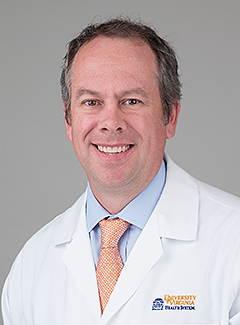
With the right diagnosis and care, children with congenital or acquired heart conditions thrive. That’s what drew Michael A. McCulloch, MD, to pediatric cardiology, and what continues to inspire his work with patients and their families every day.
From complex anatomy to constantly changing physiology, pediatric hearts present a unique challenge that McCulloch finds endlessly fascinating. With careful evaluation and modern diagnostic tools, cardiologists can identify issues early and help families understand the “why” behind their child’s symptoms.
McCulloch shares what referring providers should watch for, how collaboration with primary care physicians supports better outcomes, and why pediatric cardiology is the right specialty for him.
What drew you to pediatric cardiology?
The widely varied anatomy and constantly changing physiology associated with pediatric cardiology is fascinating and initially drew me to the field. What kept me here are the amazing people I work with and the relationships you make with patients and their families.
What’s your favorite part of practicing as a specialist?
I have always considered general pediatrics an incredibly challenging and humbling field — seeing 30 kids a day and having to determine which ones are showing subtle signs of an important disease process is overwhelming.
Although the consequences of diagnosing a child with acquired or congenital heart disease are serious, I genuinely enjoy having the ability to (at least most of the time) definitively make these determinations. Families are often relieved when the evaluation is negative, and even when a diagnosis is made, there’s a degree of reassurance knowing why their child is experiencing their symptoms. Once you overcome the initial shock of a new diagnosis, as pediatric cardiologists, we develop strong, lasting relationships with our patients and their families.
How can referring providers help with early detection and diagnosis?
We never want our referring providers to feel like they can’t reach out to ask questions – whether it’s about when to refer a patient, managing a mutual patient with heart disease, or sharing updates.
Our goal is to optimize how a patient is cared for and to try to make it possible while considering the individual challenges every family faces. As to specific recommendations for who and when to refer our clinic, while we are happy to see any patient a referring physician requests, the following scenarios tend to be the most likely to result in a diagnosis of acquired or congenital heart disease:
- Cyanotic babies
- Babies with failure to thrive without etiology
- Babies with a heart murmur but asymptomatic with normal weight gain, preferably after 2-4 months
- With any symptoms/concerns, they should be referred early
- First-degree family member with congenital heart disease, heart failure, cardiomyopathy, heart transplant, pulmonary hypertension, need for pacemaker, defibrillator, or history of sudden cardiac death
- Loss of consciousness with activity
- Recurrent loss of consciousness despite adequate hydration
- Recurrent palpitations
- Chest pain, particularly with activity
This is not an exhaustive list, and our pediatric colleagues are encouraged to refer whenever they see fit.
How do you approach working with referring providers?
Direct communication as much as possible. Telephone, text, Epic, or email conversations are ideal, especially for complex patients. However, we know pediatric providers are incredibly busy with little time available, so we adapt to whatever method works best for them.
How do you handle meeting a newly referred patient?
First and foremost, we want patients and families to understand that their primary care physician is the center of their medical home. The pediatric cardiology team will be involved as much or as little as necessary. Regardless of diagnosis complexity, the PCP should be aware of every decision, and we strive to maintain close, open communication across all components of their medical team.
What makes the UVA Health Children’s pediatric cardiology experience unique?
The UVA Health pediatric cardiology team provides cutting-edge medical and interventional care, individualized to each patient and their family’s particular needs. Our program is unique in that we provide all the services of institutions in larger cities, but with a smaller program feel, where you know all your doctors personally.
Our outcomes are among the best in the country, and we are proud and confident in our ability to provide the best care possible for children with acquired or congenital heart disease throughout the state of Virginia and the surrounding areas.